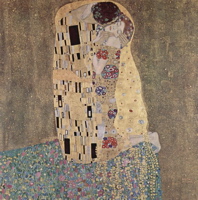History: Gilding
Gilding: the art of spreading gold, either by mechanical or by chemical means, over the surface of a body for the purpose of ornament.
Examples of gilding can be traced to 2300 BCE on ancient Egyptian decorations. Egyptian paintings show goldsmiths making gold leaf, and the sarcophagi of nobles often had gilding decorating the outside. The first gilding seen at Rome was after the destruction of Carthage, when Romans began to gild the ceilings of their temples and palaces. Shortly after that, even in private and poor dwellings, gold leaf could be seen throughout Rome. Burial sites dating from the third and fourth centuries CE were found to contain medallions engraved with gold leaf. Throughout the Middle Ages, gilding was used in churches and palaces.

The process of gilding can be employed on wood, metal, ivory, leather, paper, glass, porcelain, and fabrics and is used to embellish the decorative elements, domes, and vaults of buildings. Since gold is so malleable, even when cold, it was a natural choice to be used to cover other materials. Gold, or a substitute, may be applied in leaf form to a surface prepared by a treatment of size, mercury, acid, or heat. The applied leaf is burnished or left matte. Electroplating has largely superseded mechanical and chemical gilding of metals, but traditional gilding of delicate objects is still widely used today.
Timeline
| 2300 BCE | Egyptians use gold leaf to adorn tombs, coffins, and other objects |
| 146 BCE | Destruction of Carthage |
| 1805 CE | Luigi V. Brugnatelli, an Italian chemist invents electroplating |
| 1907 CE | Gustav Klimtís The Kiss, oil on canvas with gold leaf |
